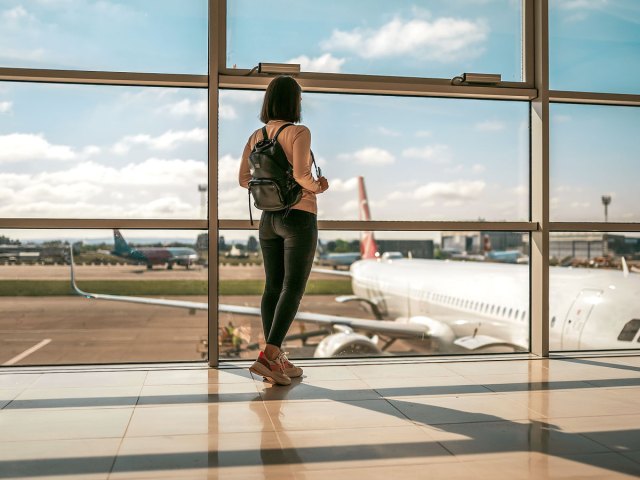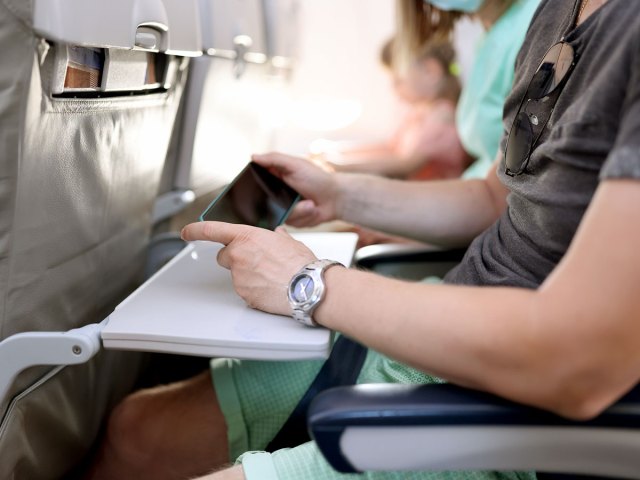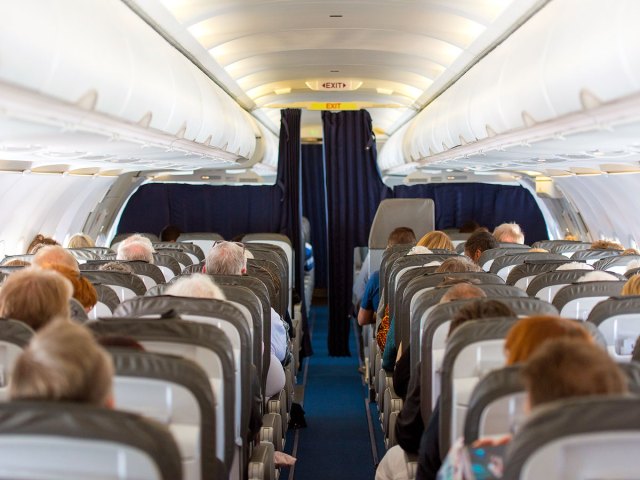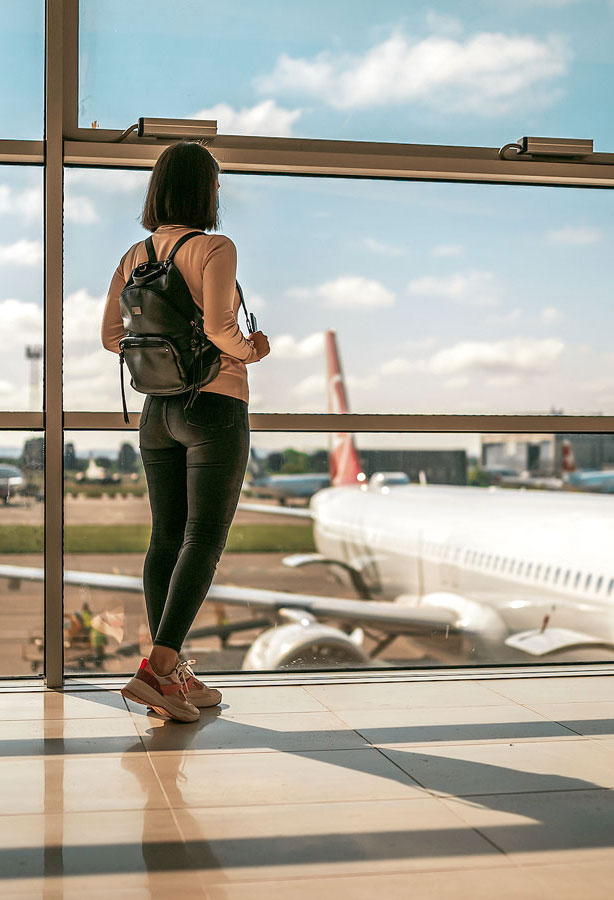Even frequent fliers may not fully understand all the terminology used when it comes to airplane seating. The branding can become especially overwhelming for economy class, where there are often many different varieties of seating to choose from, each with its own perks and restrictions. If you’ve got a trip on the horizon, there’s no need to book your flight blind — instead, we’ve laid out all your options so you know what to expect in the air. Here are the key differences between basic economy, standard economy, extra-legroom economy, and premium economy.
Standard vs. Basic Economy

Economy class — also called “coach” or “main cabin” — is the most affordable seating option that takes up the majority of most airplane cabins. The perks in economy class differ across airlines, but on most carriers, it’s a no-frills option to reach your destination for a low price.
In 2012, Delta became the first U.S. airline to introduce a subsection of economy class tickets called “basic economy,” and other major carriers quickly followed suit (though not all airlines offer this option). Designed for the most price-sensitive travelers, basic economy will typically save around $50 for a round-trip ticket, but with several notable restrictions.
Depending on the airline, basic economy passengers are often automatically assigned a seat at check-in and won’t be able to earn reward miles on their tickets, while standard economy fares allow for complimentary seat selection and the ability to earn frequent flier points. Typically, basic economy tickets are nonrefundable and non-changeable (or changeable for a fee). Basic economy fliers are also among the last to board the plane.
The greatest benefit of both basic and regular economy seating is the affordability, as these seats are the cheapest option for those who may be on a budget. However, to keep fares low, airlines squeeze in as many seats as possible, and thus seating is typically cramped and uncomfortable. Seats in economy are typically between 17 and 18 inches wide, with 30 to 32 inches of seat pitch (the distance between each row of seats). Furthermore, even standard economy fliers are often susceptible to fees for checked baggage and in-flight food and drinks, which can raise the all-in cost of your trip.
Extra-Legroom Economy

Within the economy cabin, many airlines offer dedicated seats with up to six additional inches of legroom. These extra-legroom economy seats go by different names: Economy Plus on United Airlines, Comfort+ on Delta, Main Cabin Extra on American, Premium Class on Alaska, and Even More Space on JetBlue, for example. Whatever they’re called, extra-legroom seats can be an attractive option for passengers looking for added comfort without breaking the bank.
These economy seats also often have the added perk of being located in the front of the cabin. They cost an additional fee, anywhere from $20 to $300 on domestic flights, depending on the airline and flight length. Paying that added cost gets you more room to stretch your legs, but note that these seats offer the same width as other economy seats. However, some have a greater ability to recline or come with added perks such as free snacks and alcoholic beverages. For people looking to board quicker and secure overhead space for their carry-on bags, Economy Plus and similar products also typically come with priority boarding, allowing you to get comfy in your seat well before the flight takes off.
Premium Economy

If you’re not willing to splurge for first or business class, premium economy is the most luxurious of these three “economy” seating options. Though it can cost upwards of $300 more than a standard economy ticket, premium economy is still an average of 65% less expensive than business class, making it a comparably affordable option. The catch is that this option is typically only available on widebody aircraft used on long-haul international flights (where the extra room will certainly come in handy) and a select few domestic routes such as coast-to-coast or Hawaii flights.
Premium economy sections boast wider, plusher seats that are located in a separate, curtained-off part of the cabin from other economy seating. Legroom is typically around 38 inches, and seat width is typically 2 to 3 inches greater than economy. For example, on United’s Boeing 787 aircraft, there are nine economy class seats per row in a three-three-three configuration, but just seven premium economy seats in a two-three-two configuration.
In premium economy, you’ll usually receive more attention from dedicated flight attendants, as well as a wider variety of food and drink options than fliers in standard economy. Depending on what airline you fly, premium economy comes with other elevated perks — such as extendable footrests, complimentary Wi-Fi and charging ports, amenity kits with noise-reducing headphones, and two complimentary checked bags. So, if you’re taking a longer flight, the upcharge for premium economy can definitely pay off.
More from our network
Daily Passport is part of Inbox Studio, which publishes content that uplifts, informs, and inspires.
















